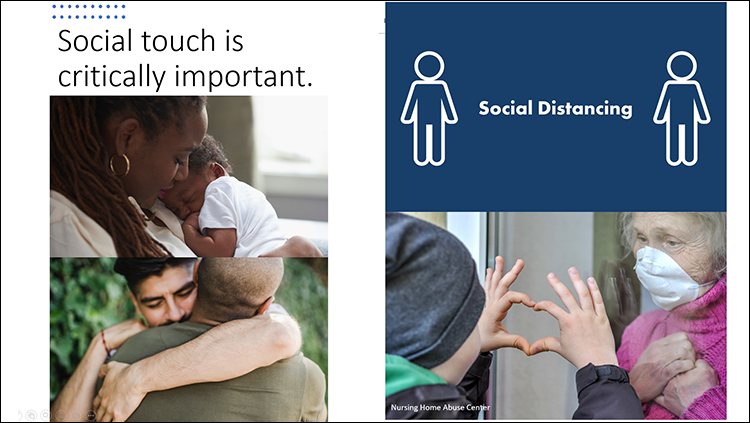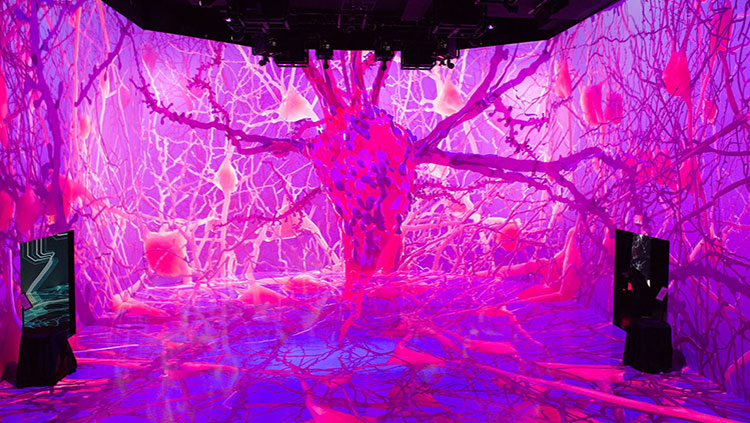Future of Neuroscience: Christin Godale
"Future of Neuroscience" is a series of interviews with rising members of the field. A forward-looking complement to SfN's “History of Neuroscience” autobiographies of distinguished researchers, interviewees reflect on their emerging careers and share thoughts on where they believe neuroscience is headed.

Christin Godale
Christin Godale is a neuroscientist and venture capitalist in life sciences. Godale completed her undergraduate degree in neuroscience and biology at Baldwin Wallace University and her PhD in neuroscience at the University of Cincinnati. Christin is a Cleveland native whose passion for neuroscience was inspired by her own personal journey. Early in her life, Christin was diagnosed with epilepsy, a neurological disorder defined by recurrent, unprovoked seizures and social stigmas. She has devoted a large portion of her professional life to studying the brain, with her dissertation work concentrating on elucidating the mechanisms underlying the development of temporal lobe epilepsy.
Godale has been heavily involved with the Society for Neuroscience’s advocacy efforts. She was a co-winner of the SfN’s NeuroAdvocate Challenge, an Early Career Policy Ambassador, participated in several SfN Hill Days, published an article about advocating for animal research on Neuronline, and was recently appointed to the SfN Government and Public Affairs Committee.
Neuroscience Quarterly (NQ): Why did you choose to pursue a career in neuroscience?
Christin Godale (CG): I was diagnosed with epilepsy when I was a very young girl, around one or two years old. I do not remember a time in my life when epilepsy didn't have a huge impact on me. I chose to pursue a career in neuroscience after I experienced one of my first episodes of status epilepticus, which is when you're in a constant seizure for over five minutes and don't return to normal consciousness. Due to the severity of the seizure event, I was in the hospital for several months. During my time there, I had an incredible neurologist named Dr. Asim Shahid. He noticed my interest in the brain because I always asked questions about what was going on, especially when they monitored my seizures with EEG. Dr. Shahid brought me some of his neuroscience textbooks from med school to read and said I should consider a career in studying the brain. That was the moment that changed my trajectory in life. After I got better, I enrolled at Baldwin Wallace in 2013 as a neuroscience and biology major.
"Dr. Shahid brought me some of his neuroscience textbooks from med school to read and said I should consider a career in studying the brain. That was the moment that changed my trajectory in life."
NQ: What did you study during your PhD?
CG: I studied a new type of epilepsy treatment called anti-epileptogenic therapies. Right now, the main treatment for epilepsy is anti-seizure medications; those work by modulating various ion channels to decrease the overall excitability of the brain. You’re ultimately modifying the seizure threshold, which makes it less likely a seizure will emerge. But the bad part about those drugs is they have a lot of comorbidities that make it hard to live. I experience a lot of those effects: I have some cognitive deficits, and I experience depression and anxiety. Plus, one-third of the patient population doesn't respond to anti-seizure medications. Another treatment option is surgery, but not all cases are candidates for surgery.
On the other hand, anti-epileptogenic therapies are designed to stop epilepsy from ever forming during the latent period of epileptogenesis for acquired epilepsies. You wouldn't even have to go on anti-seizure medications by the time those seizures would have appeared. My research explored different cell targets where a version of this drug could be used, specifically in the dentate gyrus of the hippocampus.
NQ: Has researching epilepsy shaped your own experience of the disease? Has having epilepsy changed how you conduct your research?
CG: It's both beautiful and terrifying. Beautiful as in, “Wow. This circuitry is absolutely amazing. I cannot believe all this is happening in my brain so elegantly.” And now that I understand it more, I can really bask and appreciate what exactly is going on in my head. Now, the terrifying part is understanding what is going on in my head. It can be uncomfortable to know that every time I have a seizure, these abnormal network connections are getting stronger and stronger, and some neurons are dying in my brain that I can't get back. I sometimes experience some forms of memory obstacles, which makes my work occasionally challenging. But it's a pleasure to even be doing this, though, since there are some people with epilepsy who can't pursue what they want to do in life because their epilepsy is so debilitating.
"I feel like we do a lot of cool stuff in science, but not everyone thinks about the translatable aspects of the research."
I also make sure to encourage basic epilepsy researchers to consider the patient voice and really think about how their work is going to impact patients. I feel like we do a lot of cool stuff in science, but not everyone thinks about the translatable aspects of the research. Even if you're doing exploratory science, think about how this knowledge would help people in the future. Because there are real people who struggle with these diseases every day.
NQ: What’s something from your career so far that you're most proud of?
CG: Neuroscience-wise, the proudest I've been in my graduate school career so far was getting through my qualifying exam. That was incredibly difficult, but I had a lot of support from my graduate program at the University of Cincinnati. I’m also proud of getting this far in my career while living with epilepsy. I feel like there's been a lot of things in my way, but I've managed to get past all of them. I now serve as a director of life sciences at a seed-stage venture capital firm called CincyTech in Cincinnati, OH. In my new role, I source and evaluate life science biotech companies, build relationships with entrepreneurs in both academic and industry settings, and support ongoing portfolio needs at CincyTech with my scientific expertise.
NQ: How do you hope the field of neuroscience will grow and change in the coming decades? What could make it better?
CG: I believe we can make the field better by supporting early-career researchers. We need to make sure that they not only get through their programs but also make sure they have access to opportunities after they get their degree. We need to normalize that there are careers outside academia post-PhD because it's difficult to transition. I think that will really help our field move in the right direction.



















